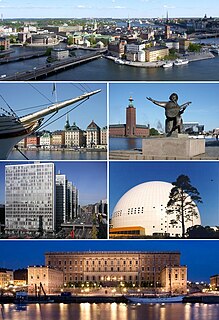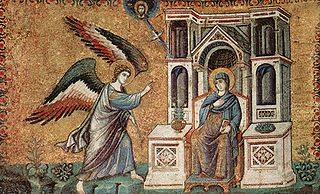This article has an unclear citation style.(September 2014) (Learn how and when to remove this template message) |
János “Giovanni” Hajnal (Budapest, 27 August 1913 – Rome, 9 October 2010) was a Hungarian naturalized Italian artist and illustrator, he is considered one of the major contemporary creator of glass walls and mosaics.

Budapest is the capital and the most populous city of Hungary, and the tenth-largest city in the European Union by population within city limits. The city had an estimated population of 1,752,704 in 2016 distributed over a land area of about 525 square kilometres. Budapest is both a city and county, and forms the centre of the Budapest metropolitan area, which has an area of 7,626 square kilometres and a population of 3,303,786, comprising 33 percent of the population of Hungary.

Rome is the capital city and a special comune of Italy. Rome also serves as the capital of the Lazio region. With 2,872,800 residents in 1,285 km2 (496.1 sq mi), it is also the country's most populated comune. It is the fourth most populous city in the European Union by population within city limits. It is the centre of the Metropolitan City of Rome, which has a population of 4,355,725 residents, thus making it the most populous metropolitan city in Italy. Rome is located in the central-western portion of the Italian Peninsula, within Lazio (Latium), along the shores of the Tiber. The Vatican City is an independent country inside the city boundaries of Rome, the only existing example of a country within a city: for this reason Rome has been often defined as capital of two states.

Hungary is a country in Central Europe. Spanning 93,030 square kilometres (35,920 sq mi) in the Carpathian Basin, it borders Slovakia to the north, Ukraine to the northeast, Austria to the northwest, Romania to the east, Serbia to the south, Croatia to the southwest, and Slovenia to the west. With about 10 million inhabitants, Hungary is a medium-sized member state of the European Union. The official language is Hungarian, which is the most widely spoken Uralic language in the world, and among the few non-Indo-European languages to be widely spoken in Europe. Hungary's capital and largest city is Budapest; other major urban areas include Debrecen, Szeged, Miskolc, Pécs and Győr.
Contents
- Works
- Glass walls in the Milan Cathedral
- Glass walls in the Aula Paolo VI
- Other glass walls
- Mosaic works
- Book illustrations
- Stamps
- References
- Bibliography
Hungarian born, Hajnal graduated from the Art Academy in Budapest; he then attended art academies in Frankfurt, Stockholm and Rome.[1] He started his artistic profession as book illustrator which he continued to pursue throughout his career.

Frankfurt is a metropolis and the largest city of the German federal state of Hesse, and its 746,878 (2017) inhabitants make it the fifth-largest city of Germany after Berlin, Hamburg, Munich, and Cologne. On the River Main, it forms a continuous conurbation with the neighbouring city of Offenbach am Main, and its urban area has a population of 2.3 million. The city is at the centre of the larger Rhine-Main Metropolitan Region, which has a population of 5.5 million and is Germany's second-largest metropolitan region after the Rhine-Ruhr Region. Since the enlargement of the European Union in 2013, the geographic centre of the EU is about 40 km (25 mi) to the east of Frankfurt's central business district. Like France and Franconia, the city is named after the Franks. Frankfurt is the largest city in the Rhine Franconian dialect area.

Stockholm is the capital of Sweden and the most populous urban area in the Nordic countries; 962,154 people live in the municipality, approximately 1.5 million in the urban area, and 2.3 million in the metropolitan area. The city stretches across fourteen islands where Lake Mälaren flows into the Baltic Sea. Just outside the city and along the coast is the island chain of the Stockholm archipelago. The area has been settled since the Stone Age, in the 6th millennium BC, and was founded as a city in 1252 by Swedish statesman Birger Jarl. It is also the capital of Stockholm County.
Hajnal visited Italy for the first time in 1931 when he walked from Budapest to Florence in order to admire Italian art.[1] He relocated permanently in Rome in 1948 at the age of 35.

Florence is the capital city of the Italian region of Tuscany. It is the most populous city in Tuscany, with 383,084 inhabitants in 2013, and over 1,520,000 in its metropolitan area.
In Italy his artistic career was mainly based on glass walls and mosaics. He was granted Italian citizenship in 1958 due to his artistic merits. In 1992 the Hungarian President granted Hajnal the Cross for Civil Merits, the highest Hungarian award for in the art field. The Council of Art Academy of Budapest unanimously nominated him Magister Rerum Artium Honoris Causa. In 2002 the Italian president Azeglio Ciampi awarded him the Ordine al merito della Repubblica Italiana (a high honour award). Hajnal died in Rome on October 9, 2010.[2]























